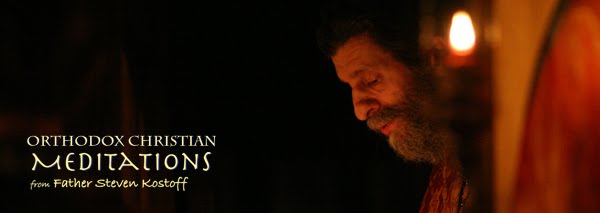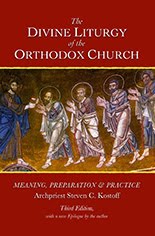Dear Parish Faithful,
CHRIST IS RISEN!
INDEED HE IS RISEN!
"And when the sixth hour had come, there was darkness over the whole land until the ninth hour." MK. 15:33)
"And very early on the first day of the week they went to the tomb when the sun had risen." (MK. 16:2)
St. Mark the Evangelist is rather precise when he narrates that the Lord was crucified at the third hour (MK 15:25); that darkness fell over the land at the sixth hour (15:33); and that Christ died at the ninth hour (MK 15:34). According to the Jewish reckoning of time, that would mean that the Lord hung upon the Cross from about 9:00 a.m. (the "third hour") until 3:00 p.m. (the "ninth hour") on that first "Holy Friday." For the last three hours, then, "there was darkness over the whole land." This is not a weather report from the Evangelist. Rather, this unexpected darkness was in fulfillment of the prophecy of Amos (read as the OT reading at the Sixth Hour on Holy and Great Friday) that was a "sign" of great significance for the early Church as it began to reflect upon the "scandal" of the Cross:
"And on that day," says the Lord God, "I will make the sun go down at noon, and darken the earth in broad daylight. I will turn your feasts into mourning and all of your songs into lamentation; I will bring sackcloth upon all loins, and baldness on every head; I will make it like the mourning for an only son, and the end of it like a bitter day." (AMOS 8:9-10)
The fulfillment of this prophecy revealed the cosmic dimension and significance of the Lord's death on the Cross: all of creation mourned the death of the Son of God. Truly this was an awesome mystery! Yet, while at the time of the Crucifixion this very darkness may have intensified the solemnity of the Lord's death, it also intensified the starkness of Christ dying on the Cross seemingly abandoned by all, including His heavenly Father:
And at the ninth hour Jesus cried with a loud voice, "E'lo-i, E'lo-i, la'ma sabach-tha'ni?" which means, "My God, my God, why have you forsaken me?" (MK 15:34)
Again, the impression is that there was no one with Jesus in his hours of darkness upon the Cross. Yet, at the very moment of His death and seeming abandonment, St. Mark narrates that a Gentile centurion was the first to realize that this was not the case:
And when the centurion, who stood facing him, saw that he thus breathed his last, he said, "Truly this man was the Son of God!" (MK 15:39)
In addition, there was actually a silent presence of deeply sympathetic figures within some proximity of the Cross that St. Mark accounts for:
There were also women looking on from afar, among whom were Mary Magdalene, and Mary the mother of James the younger and of Joses, and Salo'me, who, when he was in Galilee, followed him, and ministered to him; and also many other women who came up with him to Jerusalem. (MK 15:40-41)
Their role was of further great importance, for their vigilance allowed them to know where the tomb of the Lord was located:
Mary Magdalene and Mary the mother of Joses saw where he was laid. (MK 15:47)
The presence of these faithful female disciples of the Lord - the women we now know and venerate as the Myrrhbearers - prepares us for the awesome revelation that will occur "very early on the first day of the week." (MK 16:2) The account of the discovery of the empty tomb; the angelic proclamation of the Resurrection of Jesus to the women by the angel in the tomb; and the astonishment of the women is narrated in a rather succinct manner by St. Mark in only eight verses (MK. 16:1-8). When the myrrhbearing women arrived at the tomb carrying their spices in the hopes of anointing the dead body of Jesus, the darkness that will soon be lifted from their hearts was already being dispelled by another sign from the world of nature, for the women arrived "when the sun had risen" (MK 16:2). The cosmos had mourned the death of the Son of God; but it will now rejoice by "announcing" the Resurrection of the Sun of Righteousness. The movement from darkness to light is a powerful motif throughout the Gospels. The darkness may represent sin or the final horror of death. Jesus is the very presence of light, and that light is so strong that neither sin nor death can resist its strength. This is not simply a literary "symbol," but a living reality. St. Mark then narrates that the women "were amazed" when, upon "entering the tomb they saw a young man sitting on the right side, dressed in a white robe." (MK 16:5) This "young man" was clearly an angel. And it is this angelic being who will first announce the Resurrection of Christ with a definitive clarity that cannot be misunderstood:
"Do not be amazed; you seek Jesus of Nazareth, who was crucified. He has risen, he is not here; see the place where they laid him." (MK 16:6)
The Jesus who had been crucified is the Jesus who was now raised from the dead. The risen Jesus is neither a "ghost" nor a "spirit." The Crucified One is now the Risen Lord - Jesus the Christ and King of Israel. The Father had not abandoned His Son; but rather vindicated the One whose resurrection will now be announced to the disciples/apostles, and through them to the whole world. As the biblical scholar, Francis Moloney has written:
The question asked of God by Jesus from the cross, "My God, my God why have you forsaken me?" (MK 15:34) has been answered. Jesus has not been forsaken. Unconditionally obedient to the will of God (see MK 14:36), Jesus has accepted the cup of suffering. On the cross he is Messiah, King of Israel, and Son of God (see MK 15:32, 39). God's never-failing presence to his obedient Son leads to the definitive action of God: He has been raised! The apparent failure of Jesus has been reversed by the action of God, who has raised Jesus from death. (The Death of the Messiah, p. 11).
St. Mark - and the other evangelists - recorded the events of that first and glorious Easter morning. They are witnesses to the Resurrection of Christ. We accept their testimony and proclaim the same "Good News" to the world today through the Church. And we invite others to share that life - including "harlots and tax-collectors." Yet, like the myrrhbearing women, we need to experience the Resurrection on a deep and personal level. In and through faith, the "stone" that covers the entrance to our own hearts can be "rolled away" by the grace of God, and a new dawn can pierce the darkness of sin and death that leaves us as if living an entombed life hidden from the light. This is the work of God. When the Resurrection of Christ is genuinely experienced in the very depths of our being, we may at first be silent because "trembling and astonishment" lay hold of us. (MK. 16:8) But when we recover our voice we may then joyfully share with others - through our faith and our lives - that CHRIST IS RISEN!







